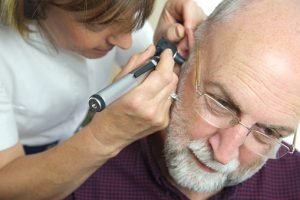 Another week has gone by, which means it’s time for your weekly health news round-up. We have gone over several interesting topics in the last couple of days and have compiled a list of our best to get you caught up. You will find information on onychomycosis, a fungal ear infection that is a common occurrence for those living in warm countries; creaky knee, a condition that produces an audible sound when over we bend them; as well as what causes a bounding pulse and how you can recognize the symptoms. In addition to these topics, we have also included information on the causes of stabbing pain in the chest and common causes for diaphragmatic pain.
Another week has gone by, which means it’s time for your weekly health news round-up. We have gone over several interesting topics in the last couple of days and have compiled a list of our best to get you caught up. You will find information on onychomycosis, a fungal ear infection that is a common occurrence for those living in warm countries; creaky knee, a condition that produces an audible sound when over we bend them; as well as what causes a bounding pulse and how you can recognize the symptoms. In addition to these topics, we have also included information on the causes of stabbing pain in the chest and common causes for diaphragmatic pain.
Ear fungus: Causes, symptoms, treatment, and home remedies
Otomycosis (ear fungus) is a fungal infection in the ears that tends to be a problem for people who live in warm areas of the world. Avid swimmers, individuals who suffer from diabetes, or people who have chronic medical and skin conditions can also experience ear fungus.
Advertisement
Otomycosis is also called mycotic otitis externa or Singapore ear. The infection is usually on the external part of the ear. Aspergillus or Candida is commonly fungi associated with a fungus of the ear, but there are others. Most of the fungi are species that exist in the environment around us, so it is rather easy to come in contact with it. Keep in mind that coming in contact with fungi doesn’t mean that you will automatically get otomycosis ear. If you have a weak immune system, you are at a higher risk of getting ear fungus if you come in contact with fungi. Continue reading…
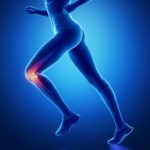 Creaky knees: Causes, treatment, and exercises
Creaky knees: Causes, treatment, and exercises
Creaky knees are often described as a crunchy sound emanated when you bend at the knee joints. Sometimes, your knees may look puffy or swollen but it doesn’t present with pain. Our knees are used practically every day during movements like walking, running, jumping, and climbing. The more we bend our knees, the more we may notice that they are making a creaking sound.
The medical term for creaky joints is called “crepitus,” which can be heard as well as felt when placing your hand over the affected joint and moving it. A big joint, such as our knees, have cartilage designed to act as a cushion between bones. If this cartilage were to become damaged or worn out, the bones in the joint will begin to rub up against each other, possibly creating a creaky sound. Continue reading…
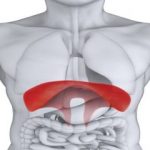 Diaphragm pain: Causes and treatment
Diaphragm pain: Causes and treatment
Diaphragm pain affects the dome-shaped muscle that separates the thorax (chest) from the abdomen. This muscle plays an important role in the breathing process. When we take a deep breath in, our diaphragm decreases the amount of pressure in the lungs and expands the ribs, allowing the lungs to fill up with air. When we exhale, the diaphragm relaxes, elevating back into its original position due to its elastic nature as air exits the body. It then rests in its normal dome-shaped position until another breath is taken.
Diaphragm muscle pain can be a symptom of many different medical problems and is a common complication during surgical procedures. However, in many cases, pain in the diaphragm is unknown. Continue reading…
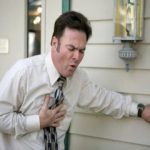 Stabbing pain in chest: Causes and treatment
Stabbing pain in chest: Causes and treatment
Experiencing stabbing pain in the chest is a relatively common occurrence at any age, often causing you to become worried that something else more serious may be going on. While chest pain is generally not a symptom you should simply brush off, only a select few cases of stabbing chest pain should prompt you to seek professional care right away.
Advertisement
This type of pain is often described as being sharp in nature, with intensity varying from dull to severe. Stabbing pains in the chest may present as a constant ache or come and go intermittently. This is the common presentation for most types of stabbing pains in chest, but knowing which additional signs to look for will help you better make the decision to seek emergency help or not. Continue reading…
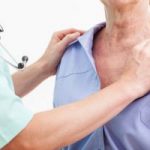 Bounding pulse: Causes, symptoms, diagnosis, treatment, and prevention
Bounding pulse: Causes, symptoms, diagnosis, treatment, and prevention
A bounding pulse is often described as being an extremely strong or powerful pulse that feels as if your heart is pounding, but thankfully, it usually occurs only for a short period of time. A pulse is the heartbeat rate that can be felt at various points on your body, such as a bounding pulse in the neck, and represents arterial palpation of the heartbeat.
Blood found within our body serves to deliver oxygen and nutrients to every cell. It achieves this in part due to a balance of various pressures within our blood vessels that keep blood flowing through the circulatory system. While a transient bounding pulse is not much of a concern, having one appear regularly or should be brought to the attention of a medical professional. Continue reading…
